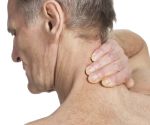Advertisement
There is no single test that can differentiate between neve, muscle, or skeletal pain. However, during exercise and activity, many people experience similar sensations that can help to clue an individual in as to what may be the cause of the chronic pain. Here are general guidelines:
- Nerve - Typically a burning or stinging sensation that may be isolated or may spread to other parts of the body during activity. This may be accompanied with loss of strength, coordination, or sensation.
- Muscle (Tear, Strain, Pull) - Typically a sharp, tearing or pulling sensation that occurs throughout a range of motion or during the transition from sustained inactivity to activity. Pain may or may not exist depending on the severity of the damage. Muscular trauma typically results in weakness, impaired function, instability, or loss of coordination.
- Skeletal (Joint or bone) - Joint pain typically occurs during weight bearing activities, sudden movements, or sustained inactivity. Pain can be sharp, dull, pressure, or throbbing. This pain is usually caused by inflammation in or around the joint caused by muscle imbalances around that joint. Bone pain is usually sharp if it is a fracture and typically dull and achy if it is a bone bruise.
Continue Learning about Pain
Important: This content reflects information from various individuals and organizations and may offer alternative or opposing points of view. It should not be used for medical advice, diagnosis or treatment. As always, you should consult with your healthcare provider about your specific health needs.












